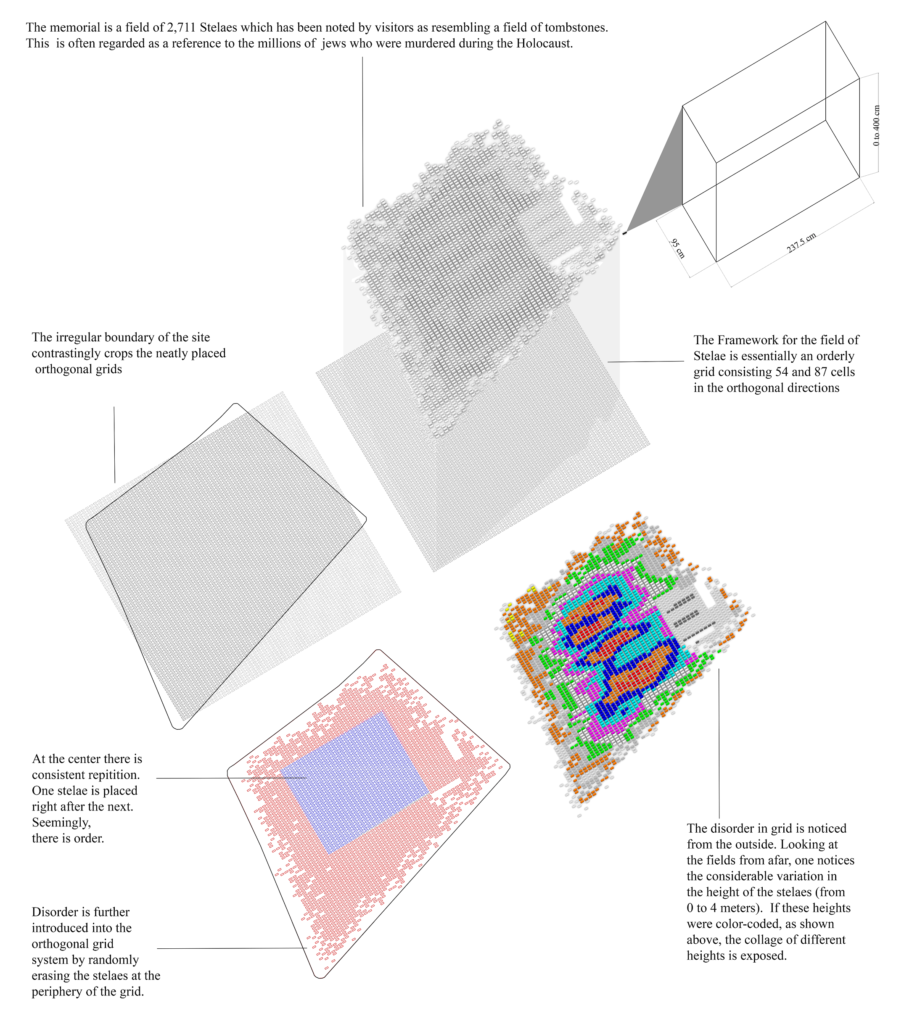Sir John Soane Museum
Soane’s collections were initially central to Soane’s Vision of creating an Architectural Dynasty (Clark, p.8). Dynasty is about continuity and defying the seemingly ultimate nature of death; preserving one’s legacy from the grave. Soane’s eldest son however did not take up after his father. To prevent his sons from inheriting his house and collections he made it a museum through an act of parliament (Clark, p.9). This act, I think memorialized Soane’s ambition. Memorials are not really all about continuity. To memorialize is to recognize the death of something. In this case, it was Soane’s initial vision. This context sets the stage for the collision
of two contrasting ideas: Life and death; Continuity and Memorialization.
Reference
Clark, Kate. Sir John Soane’s Museum. London: Kate Clark Associates, 2008.

The Memorial to the Murdered Jews of Europe
The memorial was designed by architect Peter Eisenman. The memorial is meant to preserve the memory of the millions of Jews murdered during the holocaust. The history of persecution and the rise of Nazi extremism set these two developments on a collision course. The coincidences between Eisenman’s design and the political context it references is very striking.
References
Eisenman Architects. “Berlin Memorial to the Murdered Jews of Europe 2005.” EISENMAN ARCHITECTS. Accessed August 29, 2020. https://eisenmanarchitects.com/Berlin-Memorial-to-the-Murdered-Jews-of-Europe-2005.
Dekel, Irit. “Jews and Other Others at the Holocaust Memorial in Berlin.” Anthropological Journal of European Cultures 23, no. 2 (2014): 71–84. https://doi.org/10.3167/ajec.2014.230206.
Krause, Valentina Rozas. “Cruising Eisenman’s Holocaust Memorial.” Anos 90 22, no. 42 (2015): 53–85. https://doi.org/10.22456/1983-201x.52481.
Pickford, Henry W. “Dialectical Reflections on Peter Eisenman’s Memorial for the Murdered Jews of Europe.” Architectural Theory Review 17, no. 2-3 (2012): 419–39. https://doi.org/10.1080/13264826.2012.735636.
Chang, Chin-Wei. “Memory Is Not Concrete: A Case Study of the Memorial to the Murdered Jews of Europe.” UIA 2017 Seoul World Architects Congress, 2017.

Spatial City
Spatial city is a conceptual project by Yona Friedman. The project proposes a city-expansion formula which seeks to utilize the airspace above pre-existing cities. There is usually very little building space at ground level in city centers. Expansion usually involves building outward. To counter this Yona Friedman proposed adding elevated layers to the built environment. The concept is meant to be applicable to any city. The diagram below shows its application to one of the world’s most populous cities – Shanghai.
Reference
Friedman, Y. (n.d.). Ville Spatiale. Retrieved September 07, 2020, from http://www.yonafriedman.nl/?page_id=78


